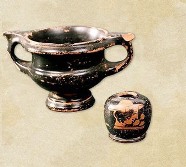  Events Archive Events Archive
African Fashion Show for Charity 2024
May 25, 2024
On May 25, 2024 African Fashion Show for Charity took place at the National Museum of History of Moldova in Chișinău. This event, now in its second edition, aims to promote cultural diversity and support charitable causes. The event was supported by famous international model Kamila Lumor, who flew from Milan for the occasion. Among the distinguished guests were the Minister of Education and Research, Dan Perciun, the Romanian Ambassador to Chișinău, Cristian-Leon Țurcanu, diplomatic representatives, influential public figures from Moldova, and fashion enthusiasts. The show featured unique clothing pieces from renowned international designers such as Zita Milano from the UK, representatives from India via the Indo-Mold Business and Cultural Organization (IMBCO), as well as local designers such as Florii, Gorgette, and C'EST Cher. Students from the Technical University of Moldova and State Pedagogical University "Ion Creangă" also had the opportunity to showcase their creations on the runway. Founded by Yerie Mary Kamara Paglione, the African Fashion Show for Charity aims to unite African and European cultures, celebrating the friendship and cultural diversity between these continents. The event brought together participants from Sierra Leone, UK, Ghana, Moldova, India, Colombia, and Turkey. The funds raised through ticket sales, donations, and the sale of African accessories are dedicated to supporting charitable initiatives, such as the development of palliative care services by the organization Hospices of Hope Moldova and aid young designers in Moldova through the ZIP House fashion hub. We extend our heartfelt thanks to everyone who made this event possible: General Sponsor: Association of Community Initiatives and Sport (ASICS)
Partners: National Museum of History of Moldova, Lifemantra Maven Solutions, International Women Club Moldova, Embassy of India in Bucharest, Regency Hotel, Irina Negara Desert, ZIPhouse Fashion Hub, Iomodels School, Ozlem Sertel, Basavin Winery, Zentrum Restaurants, Pearl Code, Sabrina Gubadov - Social Media Consultant, iTicket.
Media Partners: Vocea Basarabiei, Radio Noroc
Photo Partner: Ruslan Chihai We also extend our gratitude to all the volunteers who dedicated their time to help organize this event.
|











 31 August 1989 St., 121 A, MD 2012, Chisinau, Republic of Moldova
31 August 1989 St., 121 A, MD 2012, Chisinau, Republic of Moldova































































